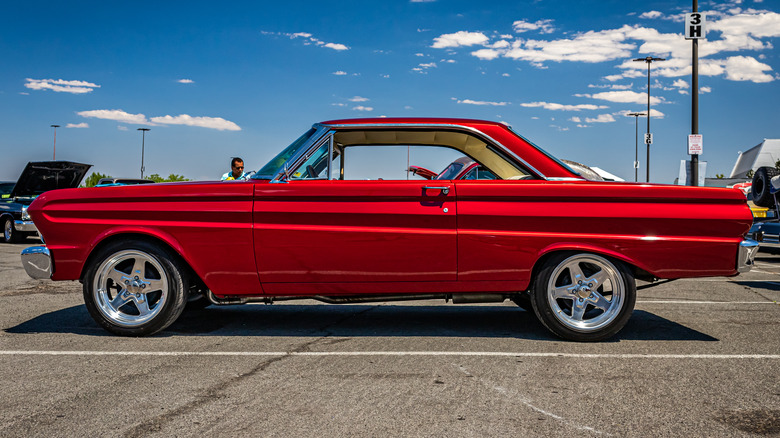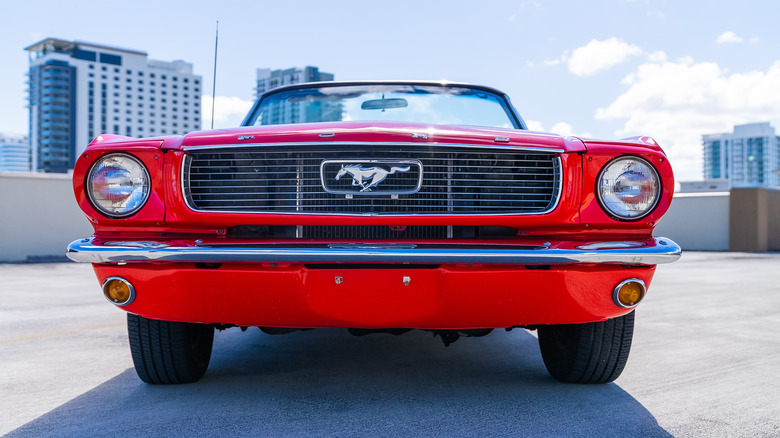
Different_brian/Getty Images
For most automobile enthusiasts, the Ford Mustang is essentially the pinnacle of automotive innovation, no matter what iconic make or model you’re looking at. Even if you don’t subscribe to that point of view, it’s virtually impossible not to recognize the Mustangs from the 1960s as the golden child of the pony car era. The same argument could easily be made, however, for another Ford offering from the 1960s — though the Ford Falcon is arguably not held in quite the same esteem as its venerated counterpart.
As it stands, the Falcon debuted five years before the Mustang, hitting the market in 1959 as one of Ford’s first «compact» vehicles. While the Falcon did so touting fuel economy over power, its sleek lines and weight soon found favor with the muscle car set, which began souping up models left and right. That fact was likely not lost on Ford bosses, who beefed up the build and the engine over ensuing years.
Despite the car’s popularity, the Ford Falcon was almost immediately pushed by the wayside in 1964 when the first Mustangs began rolling off the production line. Boasting serious style and just enough oomph under the hood, the Mustang arguably eclipsed the Falcon in every way, perhaps most notably in sales numbers. But as beloved as the Mustang was and remains, Ford’s celebrated pony car owes a massive debt to its predecessor. Some might even argue that the Mustang wouldn’t exist without the Ford Falcon.
Mustang is literally built on the back of the Ford Falcon

Wirestock/Getty Images
Yes, just as the Ford Mustang’s distinctive look would influence virtually every muscle car produced in its wake, it seems the iconic vehicle was not an original ground-up creation. In fact, in its infancy, the Ford Mustang was quite literally built on the Ford Falcon’s platform.
That fact, of course, helps explain the similarities in the layouts of the two vehicles, and it should go without saying that recycling the Falcon’s platform for the Mustang was a smart money-saving move that even allowed Ford to utilize a wide array of the parts and components that were also used in producing the Falcon. Shared parts and platform aside, if you’ve ever been behind the wheel of a 1960s-era Mustang, you know the similarities to the Falcon essentially stop there, with the ‘stang offering a 289 cubic inch V8, enhanced handling packages, and a vast range of options that made it uniquely personalizable, save its distinctive body styles, which were customizable primarily in a buyer’s choice of paint color.
Nonetheless, sharing components with the Ford Falcon helped keep the price of a new Mustang surprisingly low for a sports car, with base models selling for about $2,300. But those combined elements helped transform the Ford Mustang from a cleverly realized production car into a full-fledged legend in the annals of American automotive history. That fact is made all the more fascinating with the knowledge that Mustang attained those heights on the back of the humble Ford Falcon.